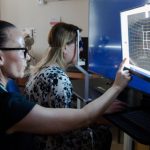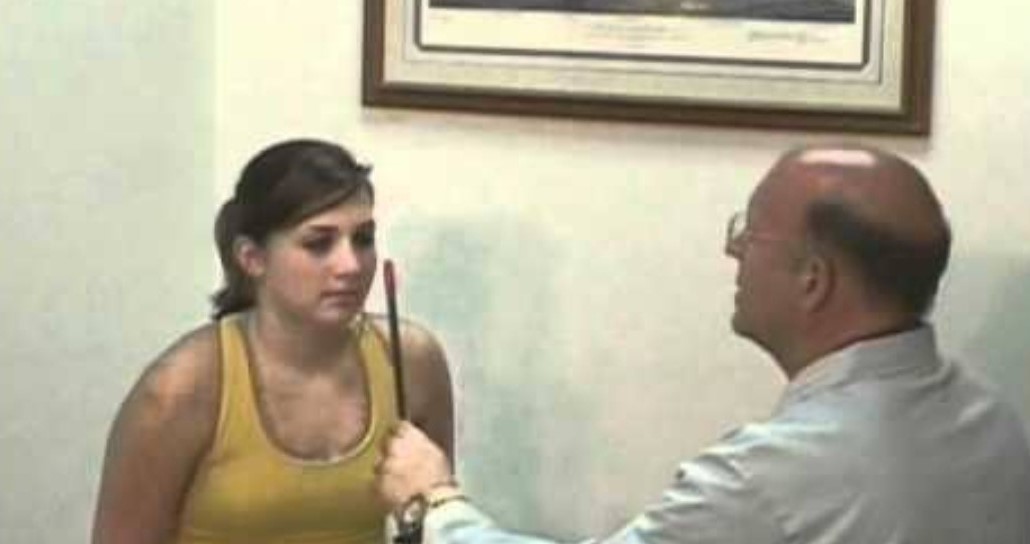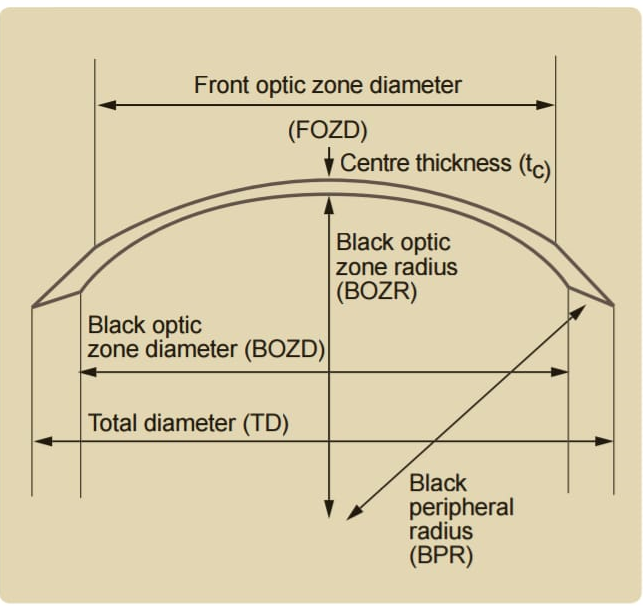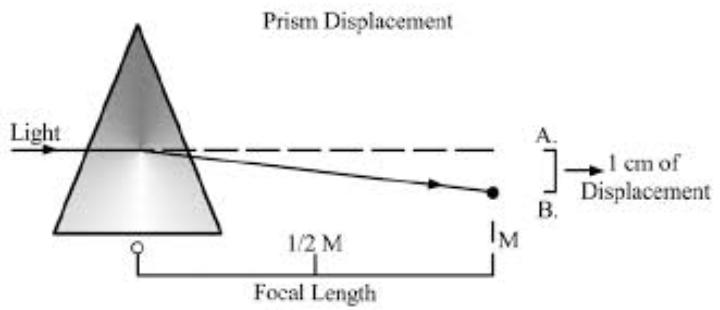DEFINITION OF LOW VISION (WHO- World Health Organization):
A person with low vision is one who has impairment of visual functioning even after treatment of an operation and standard refractive correction and has a visual acuity of less than 6/18 to light perception or a visual field of less than 10 degree from the point of fixation but who uses or is potentially able to use vision of the planning and execution of a task.
VISUAL IMPAIRMENT:
- PARTIAL BLIND [6/24 TO 6/60]
- LOW VISION [<6/18 TO PL ]
- SUBNORMAL [ 6/18 TO PL]
WHO(World Health Organization) CLASSIFICATION DEFINES LOW VISION AS CORRESPONDING TO:
- VA of less than 6/18 but equal to or better than 3/60.
- Corresponding VA less to less than 20 degree in the better eye with best possible correction .
LOW VISION :
The best corrected VA in the better eye less than 6/18 and the vision field less than 20 degree from the point of fixation.
VISION IMPAIRMENT:
Refers to condition with decreased VA from blindness to partial sight.
PARTIAL BLINDNESS:
THE BEST CORRECTED VISION ACUITY IN THE BETTER EYE LESS THAN 3/60 0R VISUAL FIELD LESS THAN 10 DEGREE FROM THE POINT OF FIXATION.

COMPLETE BLINDNESS :
It is defined as no usable vision with exception of light perception.
FUNCTIONAL EFFECT OF LOW VISION:
- Loss of central vision.
- Loss of peripheral vision.
- Glare and contrast.
GRADES OF VISUAL IMPAIRMENT:
| Category of visual Impairment (low vision) | Visual acuity with best possible correction (Maximum less than the) | Minimum equal to or better |
| 0 | 6/6 (Normal) | 6/18 |
| 1 | 6/18 (Visual impairment) | 6/60 |
| 2 | 6/60 (severe visual impairment) | 3/60- CF at 3m |
| 3 | 3/60 – CF at 3 m (Partial blind) | 1/60-CF at 1m |
| 4 | 1/60 – CF at
1 m (Blind) |
Light perception(PL) |
| 5 | No PL (Total blind) | ————– |
MAIN CAUSES OF BLINDNESS IN 50+ POPULATIONS ARE AS FOLLOWS:
- CATARACT – 62.6%
- REFRACTIVE ERRORS-19.7%
- CORNEAL BLINDNESS- 0.9%
- GLAUCOMA– 5.8%
- SURGICAL COMPLICATION- 1.2%
- POSTERIOR SEGMENT DISORDERS- 4.7%
- OTHERS-5.0%
LOW VISION HISTORY:
- DEMOGRAPHIC DATA:
- NAME
- AGE
- SEX
- OCCUPATION
- HOBBIES
- GENERAL HISTORY:
- OH (ocular history)
- FGH (family general history)
- FOH (family ocular history)
- AH (allergy history)
- FAMILY DATA:
- Count of family members
- Who take care the patient
- How to manage his\her daily work, who helped?
- Is there is any attender or nurse is there or not?
- DIAGNOSIS DISEASE.
- HISTORY OF DISORDER.
- CHIEF VISUAL COMPLAIN :
- DISTANCE VISION PROBLEM-
- Black board
- Seeing face
- Watching TV
- Shop name
- Outdoor – Bus number
- NEAR VISION PROBLEM-
- Near work \reading
- Note recognition
- LIGHTING ILLUMINATION :
- Dim light
- Bright light
- Fluroscent tube
- Bulb
- Is there any problem in sunlight or not?
- WRITING TASK- Signature
- MOBILITY PROBLEM:
- How do able to walk? If the answer is yes -then how to walk ,how to manage his\her daily work.
And if the answer is no-then asked the patient that who helped his\her daily work.
- GLARE PROBLEM:
- Yes or No.
- COLOUR PERCEPTION:
Ask the patient the he or she is able to identified different colours or not?
- LIVING SKILLS:
- Food identification
- Coin and note identification
- Face identification
- Dress identication.
HOW TO PREVENT LOW VISION?
Try the 20-20-20 rule:
Every 20 minutes, look away about 20 feet in front of you for 20 seconds.This short exercise can help reduce eyestrain. Clean your hands and your contact lenses-properly. To avoid the risk of infection, always wash your hands thoroughly before putting in or taking out your contact lenses.
NOTE: low vision is vision loss that cannot be corrected with glsasses , contact lens and surgery. It isn’t blindness as limited sight remains.
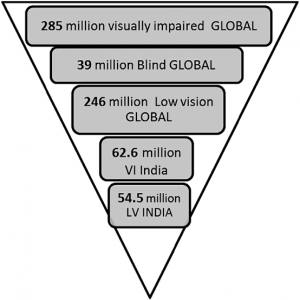
MAGNITUDE OF LOW VISION
CURRENT BLINDNESS AND LOW VISION DATA(WHO):
Number of visual impairment around the world:180 million
Number of blind among these:45 million
Number with no perception of light vision:9 million
These with some residual vision :180-9=171 millions.
OF THESE 171 MILLIONS:
Number with vision from more than PL to 3/60: 36 million
Number with vision from 3/60 to 6/18: 135 million
Number who can benefit from treatment (e.g. cataract surgery):103 million
Residual who are true low vision patients: 68 million
Total number of visually impaired :180 million
Number of blind: 45 million
Number of low vision: 135 million
ADULTS VS CHILDREN
Number of blind children out of 45 million blind: 1.5 million
- 1.5 million worldwide (Foster and Gilbert, 1992)
- 1 million in Asia (WHO ,1992)
- 0.25 million in India (Dandona et al Arch Ophthalmol 1998)
- Total number of low vision patients: 135 million
- Number of low vision children: 7 million
Read Our Articles :


